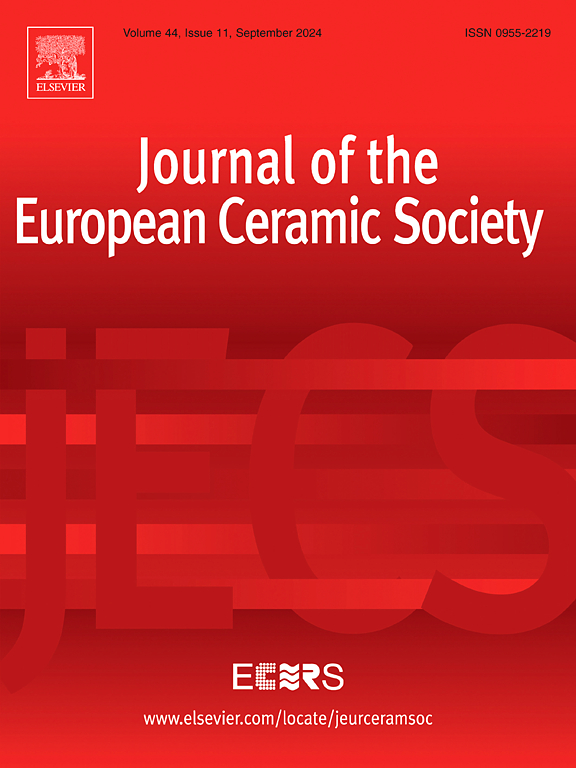High-temperature properties and microstructure evolution of C/C-ZrC-SiC composites fabricated by reactive melt infiltration
IF 5.8
2区 材料科学
Q1 MATERIALS SCIENCE, CERAMICS
Journal of The European Ceramic Society
Pub Date : 2025-02-14
DOI:10.1016/j.jeurceramsoc.2025.117288
引用次数: 0
Abstract
C/C-ZrC-SiC composites prepared by reactive melt infiltration at 1700℃ contained residual Zr2Si, which affected the mechanical properties at high temperature. Thus, the C/C-ZrC-SiC composites were heat treated from 1400 °C to 2000 °C for 1 hour, which exhibited the optimum flexural properties of 287 MPa and 19.2 GPa after annealing at 1600 °C. After heat treatment at 2000℃, the Zr2Si phase completely disappeared and Si filled in the cracks in the ZrC matrix and at the PyC-ZrC interface in the form of SiC, indicating that the high-temperature treatment promoted the diffusion and reaction of Zr and Si to consume Zr2Si. The flexural strength of composites was higher at 1800°C and 2000°C than at room temperature, which was 313 MPa and 307 MPa, respectively. This indicated that high-temperature treatment could mitigate the thermal stress mismatches in the ZrC matrix, ZrC-SiC-C interphase, and Cf-C matrix to enhance the mechanical properties.
求助全文
约1分钟内获得全文
求助全文
来源期刊

Journal of The European Ceramic Society
工程技术-材料科学:硅酸盐
CiteScore
10.70
自引率
12.30%
发文量
863
审稿时长
35 days
期刊介绍:
The Journal of the European Ceramic Society publishes the results of original research and reviews relating to ceramic materials. Papers of either an experimental or theoretical character will be welcomed on a fully international basis. The emphasis is on novel generic science concerning the relationships between processing, microstructure and properties of polycrystalline ceramics consolidated at high temperature. Papers may relate to any of the conventional categories of ceramic: structural, functional, traditional or composite. The central objective is to sustain a high standard of research quality by means of appropriate reviewing procedures.
 求助内容:
求助内容: 应助结果提醒方式:
应助结果提醒方式:


